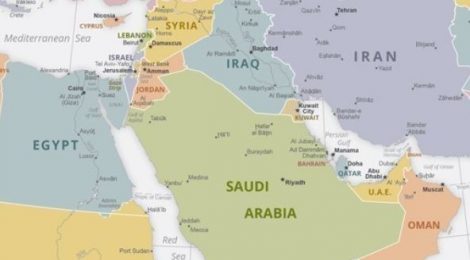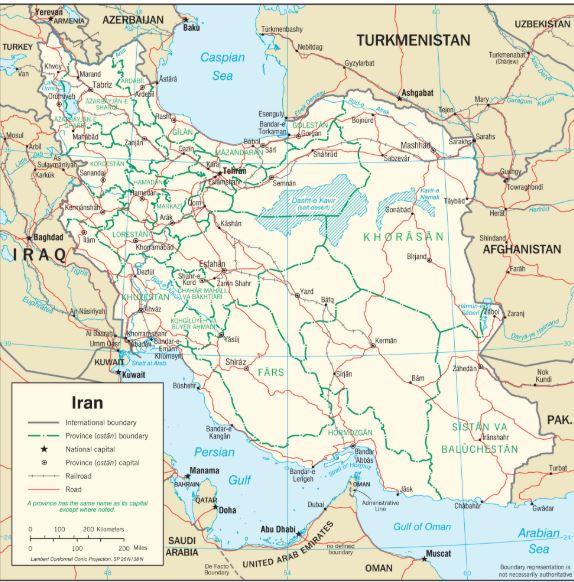
Risk of Regional or World War in the Middle East is High Right Now
Risk of Regional or World War in the Middle East is High Right Now
The past few months has seen the largest and most powerful Muslim nations in the Middle East, flex their military and diplomatic muscles in a dizzying array of interventions that is creating an interlocking web of conflicts and face-offs that could devolve into a wider regional war, or worse.
The most powerful Middle Eastern Muslim states of Turkey, Iran, Saudi Arabia, and Egypt are involved on multiple fronts, while smaller, yet wealthy states such as Qatar and the UAE, are all jockeying for position in the region, often against each other. Let’s break down who is doing what to whom:
Iran: The Islamic Republic has long intervened as they work to spread their brand of Islamic revolution. Long-time patrons of Hezbollah in Lebanon and Hamas in Gaza, Iran also is the main supporter of the Assad regime in Syria, the patron of multiple Shiite militias in Iraq, the military backer of the Shiite Houthi forces in the Yemen Civil War, and is known to foment unrest among Shiite populations in Sunni-ruled Saudi Arabia and Bahrain. Also likes to tweak the nose of Western powers in the region (U.S. and UK) through proxy and terrorist actions. Engaged in missile attack on U.S. forces in January, 2020, following the assassination by the Americans of a Revolutionary Guards general. Avowed enemy of Saudi Arabia
Turkey: Frequently conducts military raids and invasions of northern Iraq to root out Kurdish rebels (Kurds have engaged in guerrilla war inside Turkey since 1984, and use northern Iraq as a base). Turkey also has invaded northern Syria several times in recent years to battle Kurds there as well. Turkish troops are also in northern Syria in support of pro-Turkish, anti-Assad Syrian rebels, and have engaged in several battles with Syrian government forces. Turkey also is intervening militarily in Libya in support of the Tripoli-based Libyan faction. The Turkish military’s creative use of military drone tactics has turned the tide in the Libyan war, and has caused considerable damage to the Syrian military. Turkey also has voiced strong support for Azerbaijan in their recent border clashes with Armenia, which does share a tense border with Armenia. Turks and Armenians are historically hostile to one another, going back to the Armenian genocide of the World War One era.
Egypt: Egypt has supported anti-Assad rebels in Syria and the Tobruk-based faction in Libya. To this point, Egypt has only engaged in limited airstrikes in Libya, but early in July, 2020, Egypt’s parliament authorized Egyptian troops to operate outside the country’s borders. The belief is that Egypt will send the military into Libya, possibly leading to conflict with Turkish forces there. In addition, Egypt has been in tense negotiations with Sudan and Ethiopia in regards to a huge dam on the Sudan-Ethiopia border that Egypt fears will harm the flow of water in the Nile, which Egypt is dependent on. Egypt has mentioned possible military action on this front.
Saudi Arabia: The Saudis do not have the population numbers to field large armies, as Turkey, Iran, and Egypt do, but they do have a lot of money from their oil industry, and have a very modern, well-equipped military. The Saudis also support the anti-Assad forces in Syria, but are heavily involved in a military intervention in Yemen against the Iran-supported Houthis. The Houthis, with strong Iranian support, have launched multiple missile attacks on Saudi cities and infrastructure. Saudi Arabia and Iran are bitter rivals and have engaged in proxy warfare in Syria, Yemen, and Iraq, as each has supported rival sides in those civil wars.
Add to the mixture the United States, which has forces in Syria to oppose both Assad and ISIS; in Iraq to fight ISIS, and maintains a strong naval presence in the Persian Gulf. The U.S. and Iran have engaged in a long cold war, with occasional flare ups of fighting. The U.S. is also engaged against al-Qaida and ISIS in many nations in the region. The U.S. is a NATO treaty ally of Turkey, but has had many disagreements with them lately. Both Egypt and Saudi Arabia have been strong U.S. allies for decades.
In addition to U.S. deployments to the Middle East, Russia has maintained a strong military presence in Syria since 2014, and has actively fought anti-Assad rebels and ISIS in Syria. Russia is also actively backing the Tobruk faction in Libya, to the point of sending in thousands of Russian mercenary troops and transferring several warplanes to Libya’s Tobruk faction. Russia is also an ally of Armenia, which may lead to an issue with Turkey if the Armenia-Azerbaijan conflict heats up further.
And then of course, there is Israel, who has engaged in an active air and missile campaign against both Hezbollah and Assad forces in Syria for years during the Syrian Civil War. And, the recent explosions in Iran, centered mostly around the Iranian nuclear program, are believed to be part of the ongoing Israel-Iran covert war that they are waging on each other.
The current situation in the Middle East is complicated and tense. Fighting between the forces of Turkey, Egypt, Iran, Saudi Arabia, the U.S. and Russia could all break out on multiple fronts, and the interconnectedness of the various interventions, military deployments, and alliances could easily form into a very large, and very dangerous regional war. And, if the U.S. and Russia are drawn in, potentially a World War.

